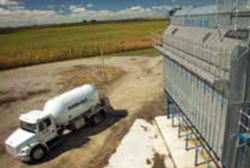 New research commissioned by the Propane Education & Research Council (PERC) finds that propane equipment cuts greenhouse gas emissions and reduces fuel costs.
New research commissioned by the Propane Education & Research Council (PERC) finds that propane equipment cuts greenhouse gas emissions and reduces fuel costs.
“A Comparative Analysis of Greenhouse Gas Emissions from Propane and Competing Energy Sources,” prepared by Nexight Group, studied 14 applications to compare emissions from propane-powered equipment with emissions from conventional energy sources such as gasoline, diesel, and electricity.
Among the findings of the analysis was that propane-powered irrigation engines emit 20 percent fewer GHGs than those using gasoline, and 11 percent fewer GHGs than by using diesel.
Propane-autogas-powered work trucks like the Ford F-350 by Roush CleanTech produce 11 percent fewer GHGs than gasoline without sacrificing torque, horsepower or payload. Compared with those using gasoline, propane-powered forklifts produce 12 percent fewer GHGs.
Propane also beats electricity in cutting GHGs. Propane-powered furnaces emit 73 percent fewer GHGs, and propane-powered water heaters emit between 36 percent and 39 percent fewer GHGs than their electric counterparts.
PERC offers incentive programs to help offset the up-front costs of new propane equipment and home upgrades in exchange for performance data and customer feedback. The Propane Farm Incentive Program offers up to $5,000 on eligible irrigation engines, ag heaters, grain dryers, and portable generators. In addition, the Propane Heat & Power Incentive Program offers financial incentives up to $10,000 for eligible propane-powered products, such as standby generators and combined heat and power (CHP) systems.









